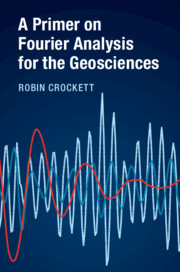Book contents
- Frontmatter
- Dedication
- Contents
- Preface
- Acknowledgements
- 1 What Is Fourier Analysis?
- 2 Covariance-Based Approaches
- 3 Fourier Series
- 4 Fourier Transforms
- 5 Using the FFT to Identify Periodic Features in Time-Series
- 6 Constraints on the FFT
- 7 Stationarity and Spectrograms
- 8 Noise in Time-Series
- 9 Periodograms and Significance
- Appendix A DFT Matrices and Symmetries
- Appendix B Simple Spectrogram Code
- Further Reading and Online Resources
- References
- Index
6 - Constraints on the FFT
Published online by Cambridge University Press: 01 February 2019
- Frontmatter
- Dedication
- Contents
- Preface
- Acknowledgements
- 1 What Is Fourier Analysis?
- 2 Covariance-Based Approaches
- 3 Fourier Series
- 4 Fourier Transforms
- 5 Using the FFT to Identify Periodic Features in Time-Series
- 6 Constraints on the FFT
- 7 Stationarity and Spectrograms
- 8 Noise in Time-Series
- 9 Periodograms and Significance
- Appendix A DFT Matrices and Symmetries
- Appendix B Simple Spectrogram Code
- Further Reading and Online Resources
- References
- Index
Summary
How the FFT interprets features with frequencies below the fundamental frequency, windowing. How the FFT interprets features with frequencies above the Nyquist frequency, aliasing. How the FFT interprets features with frequencies intermediate between FFT harmonic frequencies, ‘tuning’ and padding time-series, use of dummy-data with specific frequency content. Basic approaches to replacement of missing data. Worked examples for uncomplicated data, data with intermediate frequencies, tuning datasets.
- Type
- Chapter
- Information
- A Primer on Fourier Analysis for the Geosciences , pp. 92 - 111Publisher: Cambridge University PressPrint publication year: 2019

